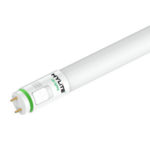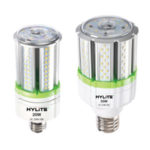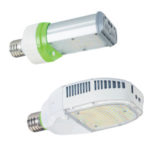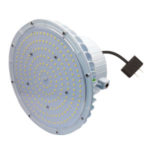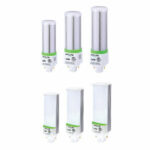No-Stress Guide to Utility Rebate Incentives
Get Paid to Upgrade
So, you’re considering upgrading your facility’s lighting to LEDs. Great move! LED retrofits are one of the fastest ways to cut energy costs, lower maintenance, and improve light quality. But here’s something you might not know: your local utility might actually pay you to do it.
That’s right. Across the U.S., electric utilities offer rebate programs to reward businesses for installing high-efficiency lighting. These rebates can cover a surprising chunk of your project cost if you know where to look and how to apply.
In this guide, we’ll walk you through everything you need to know to track down rebates, qualify for them, and submit an application without getting buried in paperwork. Let’s flip the switch on some serious savings.
Why Utilities Give Out Rebates in the First Place
It might seem odd that a power company would hand out money for using less electricity, but it makes perfect sense on their end. Encouraging customers to reduce their energy use is often more cost-effective than generating additional energy.
Instead of building a new substation or increasing capacity during peak hours, utilities fund incentive programs that reduce demand.
These programs are built into the rates you already pay, so in a way, you’re already funding them. Taking advantage of rebates is just collecting your share.
What Types of Lighting Rebates Are Available?
Not all lighting rebates are the same. Your project size, location, and purchase method can affect the incentives you’re eligible for. Knowing how each rebate functions will guide you in picking the most beneficial and rewarding option.
Here are the main rebate types to know:
- Prescriptive Rebates – Simple and Set: These are predefined rebates for common lighting upgrades. If you install a qualifying product, you get a fixed rebate amount with no guesswork. For example, $50 per high-bay fixture or $15 per LED tube. Make sure your products meet the listed requirements (such as DLC or ENERGY STAR), submit the form, and collect your rebate.
- Custom Rebates – Tailored for Unique Projects – For larger or more complex upgrades that fall outside the standard menu, utilities offer custom rebates. These are calculated based on your project’s actual energy savings. They often require more paperwork and pre-approval, but the payouts can be significantly higher.
- Instant (Midstream) Rebates – Savings at the Register – Some utilities work directly with distributors to offer instant rebates. The discount is applied right at the point of sale, with no forms or wait. These are great for quick, small-scale upgrades. Ensure that your distributor participates in the program and that the product meets the qualification requirements.
Where Do You Find These Rebates?
Good news: you don’t have to dig through endless PDFs or call every utility in the country.
These tools and tips will help you zero in on the best rebates available in your area.
- DSIRE: The Rebate Finder Power Tool
The Database of State Incentives for Renewables and Efficiency (DSIRE) is a fantastic starting point. Head to dsireusa.org, plug in your ZIP code, and filter for “lighting” incentives. You’ll see a list of all programs in your area, including commercial utility rebates.
Each entry includes contact info and a direct link to apply.
- Your Utility’s Website (Or Hotline)
Most utility companies have a dedicated section on their website for energy efficiency or rebates. If they don’t, call their customer service or energy savings team and ask, “Do you offer commercial lighting rebates?” Chances are, they do, and they’ll be happy to walk you through it.
- Ask Your Distributor or Contractor
Lighting distributors and contractors frequently deal with rebates. Many will assist you in filling out the paperwork or even submit it on your behalf. HyLite also works closely with distributors across the country to make sure our products are matched with active rebate programs.

Make Sure Your LEDs Qualify
Finding a solid rebate is a great first step, but it’s just as important to make sure your lighting products qualify. Most utilities have strict standards to guarantee the LEDs they’re incentivizing meet efficiency and performance benchmarks. Installing the wrong product could mean missing out on savings you were counting on.
To stay rebate-ready, look for lighting products that carry DLC (DesignLights Consortium) certification for commercial-grade LEDs, or ENERGY STAR® certification for smaller or residential-style lamps.
These labels indicate that a product meets industry-recognized standards for energy efficiency, quality, and reliability, making it eligible for most utility programs.
How to Apply (Without Losing Your Mind)
Rebate forms don’t have to be painful. Here’s a simple checklist to keep things moving:
- Check for pre-approval – Some utilities require approval before you install the lighting. Don’t skip this step!
- Install the qualifying products – Keep documentation, such as model numbers, spec sheets, and invoices.
- Fill out the application – Include all required info: account number, project details, quantities, etc.
- Attach your documents – This typically includes product specifications, invoices, and occasionally a copy of your electricity bill.
- Submit and follow up – Send in the paperwork and keep a copy. If you don’t hear back in a few weeks, check in.
Why It’s Worth the Effort
Rebates may take a little extra work, but the rewards are well worth it. They can slash your project costs by up to 50%, leading to faster payback, stronger ROI, and fewer hurdles when seeking budget approval. It’s one of the smartest ways to make your lighting upgrade more financially compelling.
At HyLite, we don’t just make energy-efficient lighting; we help you take full advantage of the incentives that make upgrading even more affordable. Whether you need help identifying rebates, selecting qualifying products, or navigating the paperwork, our team is ready to help.
Ready to save on your next project? Reach out to us for product recommendations, rebate guidance, or even a quick ROI breakdown.




